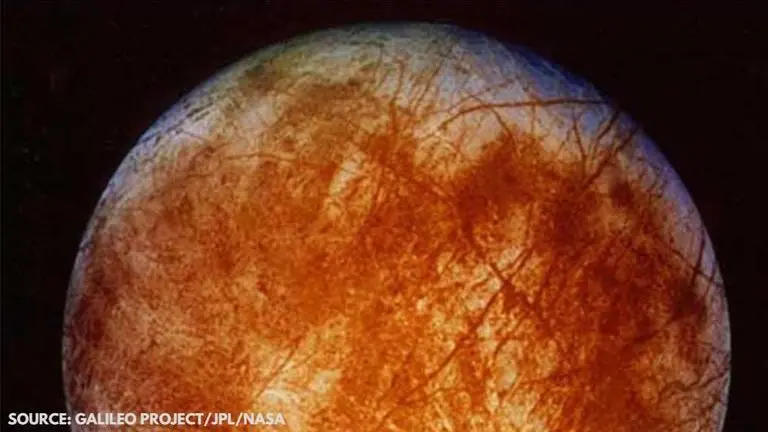Updated 28 November 2020 at 18:15 IST
Jupiter's moon Europa could release plumes of water into space from its icy crust
The Jupiter moon Europa could release plumes of water into space from little pockets that can be found in its icy crust. Continue reading to learn details.
- Science News
- 2 min read

The huge Plumes of water vapour erupting into space from Jupiter's moon Europa could have a potential source none other than the pockets that exist within the icy crust, as per a new study. According to Europa scientists, the plumes on Europa can be used to understand the habitability of Jupiter's icy moon, when you consider that these plumes can be sampled directly by spacecraft that passes through them.
Understanding the source of water plumes
Europa is among the four massive Galilean moons that orbit the gas giant and houses a gigantic ocean of salty water which can be found under its ice shell. NASA's Hubble Space Telescope and a number of other instruments were used to learn about the periodical plumes of water vapour that reaches up to 120 miles above the icy surface of the Europa. The source of these water plumes could be the buried ocean, which could be sampled using a spacecraft.
Also Read | Study: 'Search For Life On Mars, Moon & Other Objects Won't Be Easy, But Not Impossible'
Advertisement
"Understanding where these water plumes are coming from is very important for knowing whether future Europa explorers could have a chance to actually detect life from space without probing Europa's ocean," said Gregor Steinbrügge, a postdoctoral researcher at the Stanford School of Earth, Energy & Environmental Sciences.
It is important to understand the source of these plumes as water coming out of this icy crust is not considered as favourable to life than that of the global interior ocean. This is mainly due to the fact that it does not offer the energy which is considered an essential ingredient for life.
Advertisement
The sampling could be undertaken by NASA's Europa Clipper mission which is set to begin in 2024. The spacecraft is being developed by NASA and it will analyse the Galilean moon Europa by having a series of close encounters while it orbits around Jupiter. The spacecraft will conduct a follow-up on research on the study that was carried out using the Galileo spacecraft which was in the Jupiter orbit for about eight years. The study had suggested the presence of a subsurface ocean under the ice crust of the Europa.
Image credits: Galileo Project/JPL/NASA
Published By : Danish Ansari
Published On: 28 November 2020 at 18:15 IST
